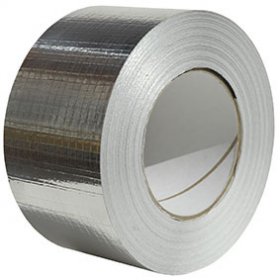I know that “s.” refers to “shillings” and “d.” to “pennies”, and I believe that “6d.” is “sixpence”.
Anyone?
If you have a source, all the better!
Edit: Thank you all for your amazing assistance. Here’s what it was for.
6½d. Would be 6.5 pence, or sixpence and hap’ne (halfpenny). 6s. 6d. Would be 6 shillings and sixpence, or 6 and 6.
Source: my parents and grandparents are/were English (Birmingham and Warwick) and I heard stories when I was growing up, as well as a couple of texts and TV shows. Sketchy sources, yes, but hopefully gets you started! Also, I’m probably wrong.
Yup, as long as 6.5 is pronounced “six and a half” because “six point five” is too modern for old money.
Edit: and ha’penny is pronounced HAYP-nee /h ɛ́j p n ɪj/
“sixpence ha’penny” would also be acceptable, if not preferable.
Source: My parents also remember pre-decimal money and I’ve heard plenty of tales.
One good story is how, on decimal day, a lot of prices went up to 240% of the original because shopkeepers simply changed the d to a p on their price labels. One old penny was 1/240 of a pound and a new penny was 1/100.
Correct, though I’m old enough to remember using old money, and it was never six and a half, just sixpence ha’penny.
I love all the old coin words: florin (two shillings), half a crown (two and six), thrup’nny bit (3d), farthing (quarter of a penny).
The e is silent? Did Wakko Warner lie to me all those years ago?
The abbreviations come from Roman times, popular currency in Rome were librae, solidi, and denarii.
There were 12 denarii in a solidus, and 20 solidi (or 240 denarii) in a Libra
In pre decimal British currency they kept the latin abbreviations, but denarii became pence, solidi became shillings and librae became pounds (and this is why the £ symbol for pounds looks kind of like an L)
And over the years at different times currency was issued in various fractions and combinations of those, such as quarter penny (farthings) and half pennies
This sounds like it also partially explains why a sixteen penny nail is written 16d. But not why pennies are somehow used to describe nail sizes.
Other comment hit the nail on the head with their link
But for those who won’t click the link, its basically just that once upon a time that’s what the price of a package of nails that size was, bigger nails cost more pennies than smaller nails.
While we’re on weird hardware measurement, I might as well talk about wire gauge
Basically it’s an arbitrary standard because it’s what someone somewhere set up their wire making equipment to do and other people just followed the same standard (though of course different parts of the world use different standards for different things, so there’s diff6 “gauge” measurements in use in various places for different things)
But the general idea is you would start with a thick wire/rod, and pull it through a die to stretch it out into progressively thinner wire
The original rod would be 1 gauge, one pass through the die and its 2 gauge, one more pass and it’s 3 gauge, etc. which is why the diameter gets smaller as the numbers get bigger
Then there’s shotgun gauge, and I have no idea why this is the standard they decided to measure this by, but it’s what it is. It’s the number of lead balls that size it would take to make a pound.
So a 12 gauge shotgun has a bore of .725 inches. It would take 12 .725 inch lead balls to make a pound.
For a 20 gauge shotgun, the bore is .615, and you’d need 20 balls that size to make a pound.
And then they throw that system out the window with .410 shotguns and just call it by the fucking bore diameter.
And I’m not gonna even touch on railroad gauges, American screw sizes, etc. not because it’s not interesting (to me at least) but because I’ve run out of fucks.
You run into this a little bit with light fixtures too, weirdly enough. Because modern indoor lighting is descended from gas lighting, it was normal for people to upgrade old gas systems to electric by using the pipes as conduit. So now, if you need a replacement bit to fix your table lamp from Walmart, they’re measured in a mostly obsolete plumbing standard, Iron Pipe Size.
One of my friends lived in a really old house that had been converted into apartments. Everything was of course laid out really weirdly because they crammed a bedroom, living room, and kitchen into what I’m pretty sure was originally 2 bedrooms and part of a stairway
One of the only built-in light fixtures in that house I’m pretty sure was an old gas light that someone screwed a lightbulb holder onto about 100 years ago and has been there ever since.
The fact that small USB battery banks are typically rated in milliamp-hours and large ones are typically rated in watt-hours is just absurd.
I appreciate you doing the web search for me! (No /s)
What a strange standard to have!
I heard the term “sixpenny nails” the other day (The Rifleman’s son Mark was shopping to fix his chicken coop) so my inquiring mind was already primed to go look it up. Just needed that little nudge from you. Now we both know!
Perhaps of note that the pronunciations of some penny amounts are not intuitive, e.g.
- 2d = tuppence
- 3d = thruppence
In all cases, the ‘pence’ is commonly squished together so it sounds more like ‘pns’ (like in comeuppance).
Wikipedia has a few examples of the different ways you could say those amounts out loud here: https://en.wikipedia.org/wiki/£sd#Writing_conventions_and_pronunciations
6.5 Drachma, can be converted to 6 sesterces or six ducats.
Obviously I’m kidding.
None the richer







